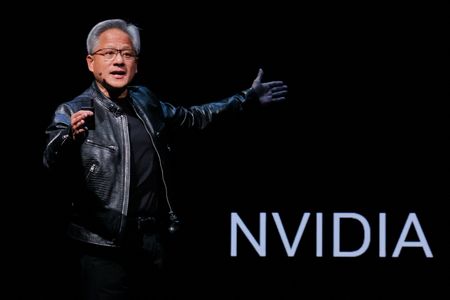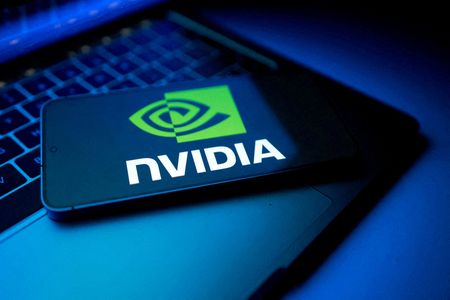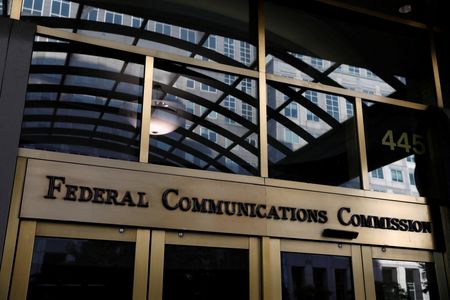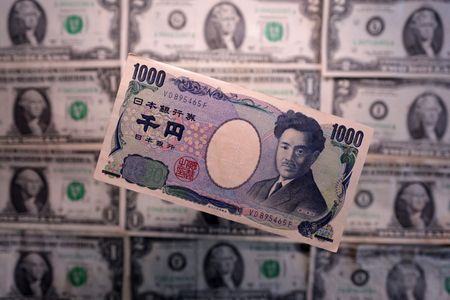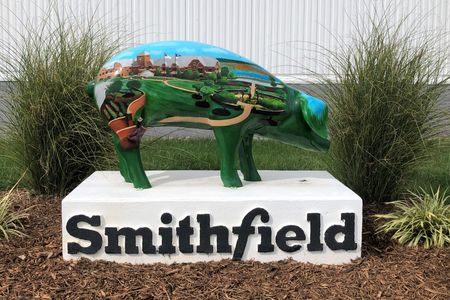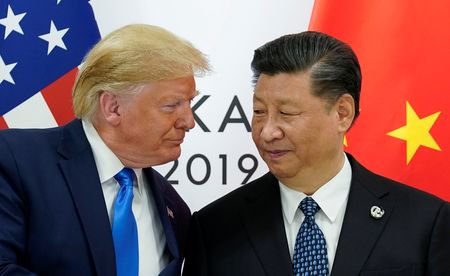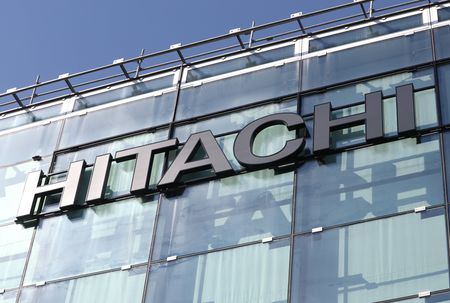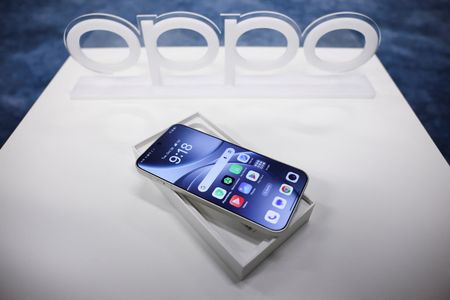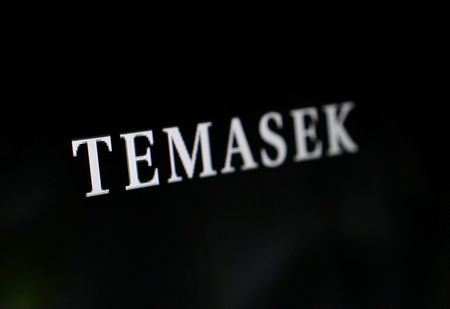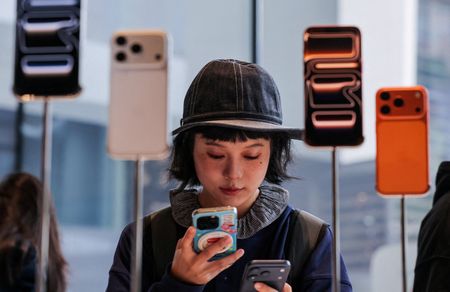By Stephen Nellis, Alexandra Alper and Arsheeya Bajwa
WASHINGTON (Reuters) -Nvidia CEO Jensen Huang said on Tuesday that the artificial intelligence chip leader will build seven new supercomputers for the U.S. Department of Energy, and said the company has $500 billion in bookings for its AI chips.
But Huang said the Chinese government has shut Nvidia out of its market, and that the company had not applied for U.S. export licenses of its newest chips because of the Chinese position. “They’ve made it very clear that they don’t want Nvidia to be there right now,” he said at a news conference during the company’s GTC event. “I hope that will change in the future because I think China is a very important market.”
The world’s most valuable company, worth close to $5 trillion, Nvidia is at the core of the global rollout of AI. It is striking deals around the world while also navigating a U.S.-China trade war that could determine which country’s technology is most used around the world.
Investors have been looking for clarity on what chips the tech company will be able to sell to the vast Chinese market, but Huang did not offer a timeline. He kicked off a keynote address at the company’s GTC event in the U.S. capital by praising policy by U.S. President Donald Trump while announcing new products and deals. These included network technology that will let Nvidia AI chips work with quantum computers.
The supercomputers Nvidia is building for the Energy Department will in part help the United States maintain and develop its nuclear weapons arsenal. The supercomputers will also be used to research alternative energy sources such as nuclear fusion. The largest of the supercomputers for the Department of Energy will be built with Oracle and contain 100,000 of Nvidia’s Blackwell chips.
“Putting the weight of the nation behind pro-energy growth completely changed the game,” Huang said. “If this didn’t happen, we could have been in a bad situation, and I want to thank President Trump for that.”
Nvidia shares closed 5% higher at $201.03 on Tuesday.
Nvidia also announced new details with Finnish telecom equipment maker Nokia to target the AI communications market. Nvidia will invest $1 billion for a 2.9% stake in Nokia and it also introduced a new product line called Arc, designed to work with telecommunications equipment. Huang said Nvidia will work with Nokia to improve the power efficiency of the company’s base stations for 6G, the next generation of wireless data technology.
“We’re going to take this new technology and we’ll be able to upgrade millions of base stations around the world,” Huang said.
Altogether the company has $500 billion in bookings for its Blackwell and Rubin chips over the next five quarters, the CEO said.
Nvidia also announced a partnership with Palantir Technologies, a company that works closely with the U.S. government. However, the focus of Nvidia’s partnership was on Palantir’s commercial business, where Nvidia will help it speed up solving logistics problems for companies such as home improvement retailer Lowe’s. Such corporate work was a longtime stronghold of Intel.
Nvidia announced a new self-driving car technology platform called Hyperion. Huang said that Nvidia is partnering with Uber to create a network of robotaxis. “This is going to be a new computing platform for us, and I’m expecting it to be quite successful,” Huang said.
“These announcements all show Nvidia’s ability to extend its reach beyond its core data center customers,” said Gil Luria, an analyst at D.A. Davidson. “While these projects pale in comparison to the capex by the hyperscalers such as Microsoft, Amazon, Google and Meta, they could create new markets for Nvidia down the line.”
Huang took the stage in a packed conference hall as Trump continued his tour of Asia this week ahead of his expected meeting with Chinese President Xi Jinping on Thursday. The flow of advanced technology between the two nations is likely to be at the center of trade discussions, with access to Nvidia’s chips a key issue.
Nvidia’s developer event is being held for the first time in Washington, D.C., a sign that the company is pursuing work with the government and contractors clustered around the capital. At its last GTC in California in March, Nvidia laid out its chip road map for the next year.
Former President Joe Biden clamped down on sales of Nvidia’s most advanced chips to China, but Trump has wavered in his policy in his second term, at first restricting exports of Nvidia’s AI chips designed for the China market before reversing course in July.
Huang has argued that Nvidia needs access to some $50 billion in potential sales from the Chinese market to fund U.S.-based research and development to maintain his company’s edge. Reuters has previously reported that Chinese developers still want Nvidia’s chips, despite pressure from Beijing to purchase domestic chips from Huawei Technologies Co.
Nvidia outlined how it is making chips in Arizona at TSMC’s facilities, and assembling servers in Texas and networking gear in California. “We are manufacturing in America again – it is incredible. The first thing that President Trump asked me is, ‘bring manufacturing back,'” Huang said.
(Reporting by Stephen Nellis and Alexandra Alper in Washington; Additional reporting by Arsheeya Bajwa in Bengaluru; Editing by Peter Henderson and Matthew Lewis)

